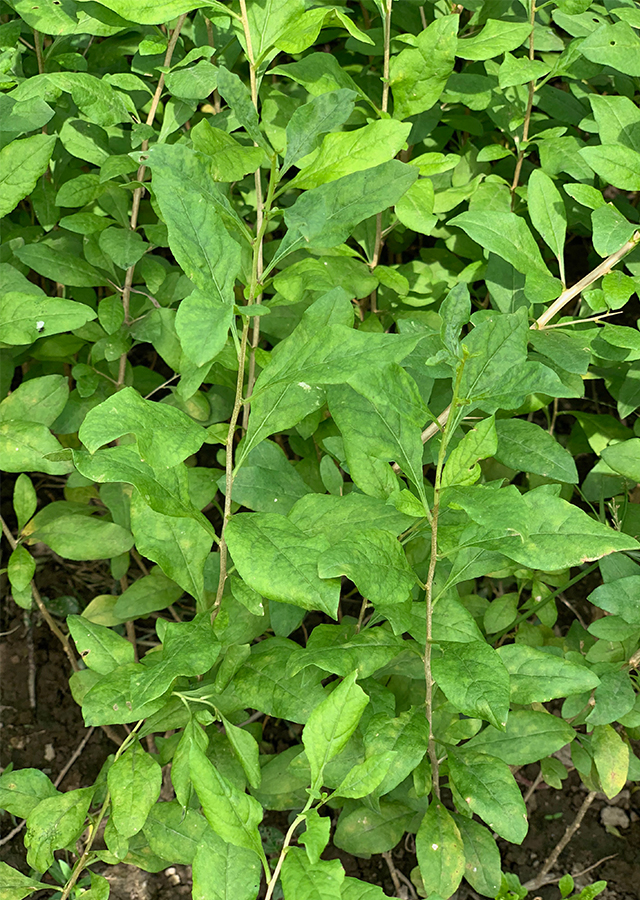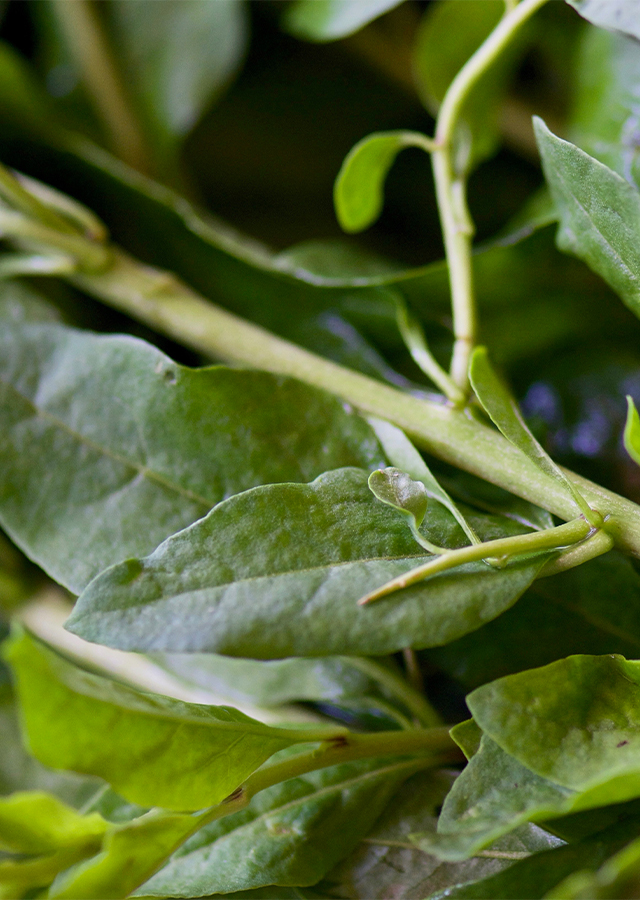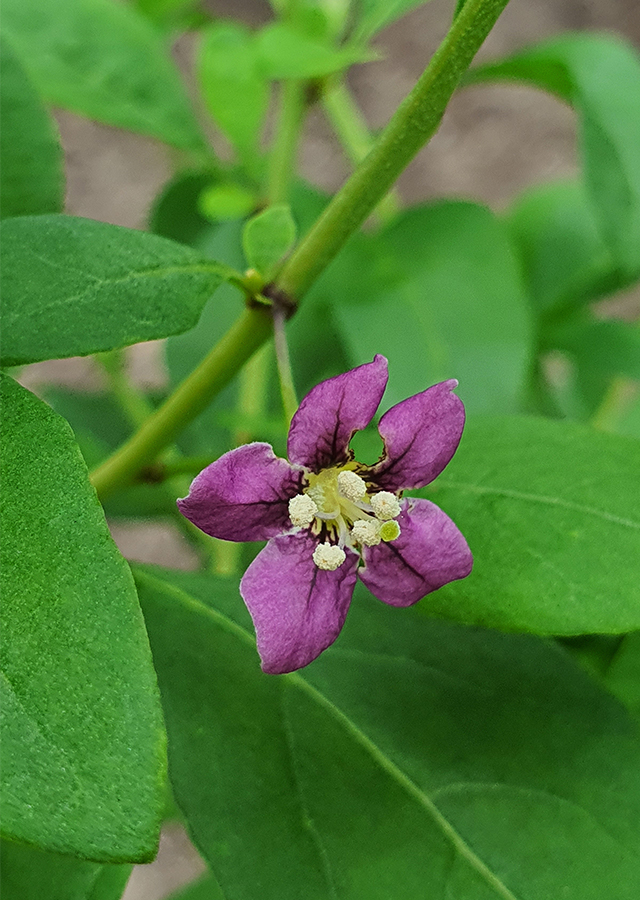Goji Berry
Lycium barbarum L.
Solanaceae
Location in our garden
Principal



Synonym
Boberella halimifolia (Mill.) E.H.L.Krause
Lycium barbatum Thunb.
Lycium cochinchinense Lour.
Habitus
Shrubs. A deciduous perennial plant, growing up to 4 m in height.
Part Used
Leaves
Bark
Fruit
Roots
Young Shoot
Growing Requirements
Full Sunshine
Habitat
Riverbanks
Coastal
Roadside
Shrublands
Overview
This plant is endemic to China. The species has been naturalized in Britain, Europe and Asia and it is widely cultivated in Northern and Southern China especially in Ningxia and Tianjin Shi. This berry, revered by traditional Chinese herbalists, has for centuries been used both as food and for various supposed medicinal benefits. It can be used for cooking, or simply eaten right off the vine, or made into tea.
Vernacular Names
Murali (India), Goji bes (Dutch), Di gu pi (Chinese), Bocksdorn (German), Spina-santa di barberia (Italian), Gu gi ja (Korean), Cambronera (Spanish).
Agroecology
A plant grows up to 2000 m, primarily from the temperate and subtropical areas. At low elevations, it flowers profusely, but at high elevations, it does not bloom. It grows best in areas where daytime temperatures range from 13-25 ° C per year. Average annual rainfall in the 700-1,500 mm range is preferred. A sunny location is needed. In impoverished soils, success. A pH in the 5.5-7.5 range is favored.
Morphology
- Stems - glabrous, branches thorny.
- Leaves - solitary or whorled, lanceolate or long elliptic, 2–3 cm by 3–6 mm, membranous.
- Flowers - inflorescences solitary or 2–3 -flowered clusters, corolla purple, funnelform; tube 8–10 mm, distinctly longer than limb and lobes; stamens and style slightly exserted.
- Fruits - roughly spindle-shaped or ellipsoidal, 6–20 mm long, and 3–10 mm in diameter, contains 20–50 seeds and has a sweet and fruity taste.
- Seeds - usually 4–20, brown-yellow, 2 mm across.
Cultivation
- In early spring, sow seeds in a greenhouse. The germination is usually good and reasonably quick.
- Half-ripe wood cuttings, 5-10 cm with a heel if possible, in single-frame pots in July / August.
- In a cold frame, cuttings of mature wood, rising in the current season, fall to late winter.
Chemical Constituents
- Lycium Barbarum Polysaccharides (LBPs), betaine, phenolic, flavonoids, carotenoid (zeaxanthin dan B-karoten), amino acid, cerebroside, β-sitosterol, galacturonic acid, phenylpropanoids
Traditional Medicinal Uses
- It mainly acts on the liver and kidneys.
- A variety of compounds have shown hepatoprotective activity and inhibitory effects on the rennin/angiotensin system in the root bark.
- Lycium barbarum can treat several diseases in Traditional Chinese Medicine, including blurry vision, stomach pain, infertility, dry cough, nausea, dizziness, and headache.
- The root bark is taken internally to prevent internal haemorrhages, chronic fevers, nosebleeds, tuberculosis, cough, asthma, etc.
- The fruit is taken internally, treating diabetes, high blood pressure, poor eyesight, vertigo, lumbago, impotence, and menopausal symptoms.
- A sweet tonic decoction produced from the fruits is used to lower blood pressure and blood cholesterol levels.
- In treating high blood pressure, diabetes, failing eyesight, vertigo, lumbago, impotence, and menopausal symptoms, the fruit is taken internally.
Part Used
Reference Sources
- Lim, T.K. (2013). Edible Medicinal and Non-Medicinal Plants. Volume 6, Fruits. pg 240-266.
- Ncbi. (2011). Chapter 14 Biomolecular and Clinical Aspects of Chinese Wolfberry. https://www.ncbi.nlm.nih.gov/books/NBK92756/. 14-08-2020
- PFAF. (No date). Lycium barbarum - L. https://pfaf.org/user/plant.aspx?latinname=Lycium+barbarum. 14-08-2020.


